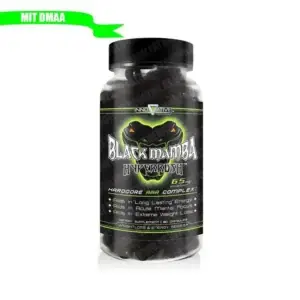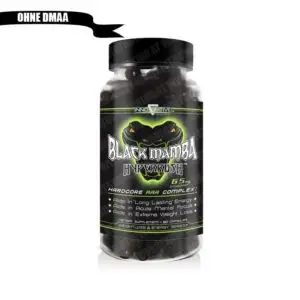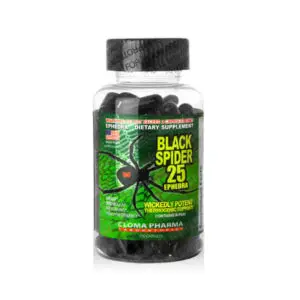- Supplements
- Fat Burners
- Pre Workout Booster
- Testo Booster
- Ephedrine HCL
- ECA stack
- Yohimbine
- Prohormones
- SARMs
- Power
- Muscle
- Accessories
- Fat loss
- Diet
- Health
- Endurance
-
50€+ Order = Free Shipping
*AT & DE
Manufacturers
BESTSELLER








About
FATBURNERKING


Monk's pepper, also known as Vitex agnus-castus, is a plant that is traditionally used to treat various hormonal complaints.
Monk's pepper, known as Vitex agnus-castus or chaste tree, belongs to the Lamiaceae family. This versatile medicinal plant has a long tradition and has been used for medicinal and ritual purposes since ancient times. Today, monk's pepper is particularly popular in naturopathy for the treatment of hormonal complaints in women. It is often used to treat PMS symptoms, menstrual cramps and to support fertility.
Monk's pepper is not only medically valuable, but also an ornamental plant. It provides an important habitat and food for insects. With its flexible shoots, it was also traditionally in demand for basket weaving in wine-growing regions.
The correct intake of monk's pepper should always be carefully considered and, if necessary, discussed with an expert in order to achieve the best possible results.
Monk's pepper, also known as Vitex agnus-castus, is a herbal medicine that is often used to treat premenstrual syndrome (PMS), period pain and menopausal symptoms. The beneficial active ingredients of this plant, especially the diterpenes, play a decisive role in alleviating menstrual cycle symptoms in women.
A key mechanism of action of monk's pepper is the regulation of prolactin levels, which can help to alleviate mood swings and depressive moods. This balancing effect on prolactin has made monk's pepper a popular remedy for supporting normal steroid hormone metabolism.
In addition, monk's pepper has calming and balancing properties, which are valued in traditional Chinese medicine for the treatment of nervous restlessness.
In summary, monk's pepper offers the following benefits:
Monk's pepper can be purchased in pharmacies as a herbal medicine and is highly valued as a support for a healthy hormonal balance in women.
Monk's pepper, also known as Vitex agnus-castus, played an important role in monasteries in the Middle Ages. It was used both as a spice and to support the vow of chastity of monks and nuns. This plant originates from the Mediterranean region, southwest Asia and the Crimea and still grows wild today in countries such as Spain and Italy.
The name monk's pepper is derived from its use in monastery gardens, where the seeds were used as a substitute for pepper. Despite this use, the plant belongs to the verbena family. Historic writings from Greece, Egypt and Rome, including Homer's "Iliad", document the monk's pepper as a symbol of chastity.
In addition to its use as a spice, monk's pepper was also valued as a medicinal plant. In the past, it was used to treat injuries and abdominal complaints.
Historical facts about monk's pepper:
This diverse use makes monk's pepper a remarkable historical plant.
Monk's pepper, botanically known as Vitex agnus-castus, has been used since ancient times to treat various health complaints in women. This medicinal plant is particularly valued for premenstrual syndrome (PMS), menstrual cramps and menopausal symptoms. Its ability to positively influence the female hormone balance makes it a popular herbal treatment option. Taking monk's pepper can stabilize female hormone levels and alleviate symptoms such as mood swings, irritability and breast pain typically associated with PMS. Despite the limited scientific evidence for the treatment of menopausal symptoms, monk's pepper is often seen as a potential supporter due to its regulating effect.
Monk's pepper is known for its effectiveness in correcting hormonal imbalances, especially in women with elevated prolactin levels. This plant has a harmonizing effect on the interaction of the sex hormones, especially by stabilizing the relationship between oestrogen and progesterone. By lowering prolactin levels, monk's pepper promotes a more balanced hormonal effect in the body and can thus alleviate cycle-related complaints. In naturopathy, it is often used to reduce PMS symptoms and menstrual cramps as it influences the pituitary gland, which plays a key role in hormone regulation.
Monk's pepper has positive effects on menstrual problems such as irregular or missed periods. It helps to regulate the menstrual cycle and can shorten cycles that are too long. The medicinal plant is used in particular for specific conditions such as mastodynia (breast tenderness) and premenstrual complaints. Monk's pepper can alleviate physical complaints such as abdominal and back pain and breast tenderness if taken daily for at least three cycles. Although the exact mechanism of action is not fully understood, it is believed that the influence on the pituitary gland and binding to opioid receptors contributes to the relief of symptoms.
Studies suggest that monk's pepper can alleviate PMS symptoms beyond the placebo effect. It reduces the release of prolactin in the brain and thus helps to alleviate symptoms such as mood swings. Its effect is partly based on the fact that it binds to opioid receptors in the brain. This helps to regulate prolactin levels, which is crucial for relieving PMS symptoms such as irritability and breast pain. Although there is evidence of its efficacy, study results are often very heterogeneous and not always easily comparable.
The use of monk's pepper for menopausal symptoms is controversial due to a lack of scientific evidence. Nevertheless, its prolactin-lowering effect could help to harmonize the hormonal imbalance of progesterone and oestrogen in the early menopausal phase. It is thought that by releasing dopamine, the plant may alleviate depressive moods that can occur during the menopause. Despite the lack of scientific evidence, some women use monk's pepper as a supportive measure to alleviate symptoms in the early phase of the menopause.
Monk's pepper, also known as Vitex agnus-castus, is often used to relieve PMS symptoms. Studies show that a daily dosage of 20 milligrams of dry extract has the best effect. A higher dosage offers no additional benefits, while lower dosages are less effective.
For optimal results, it is recommended to take monk's pepper over a period of at least three months. This allows a thorough evaluation of its effectiveness. Important: It should always be taken after consulting a specialist to clarify possible interactions or contraindications.
As a herbal medicine, monk's pepper can help to regulate the balance of the hormone prolactin and thus alleviate symptoms of PMS. Due to its effectiveness and role in alleviating hormonal complaints, monk's pepper is often considered a beneficial supplement.
Monk's pepper, also known as Vitex agnus-castus, is a herbal medicine that is often used to relieve PMS symptoms. Despite its benefits, users should also be aware of possible side effects and contraindications.
Scientific studies on the efficacy of monk's pepper, in particular Vitex agnus-castus, have produced interesting findings. A key study has shown that methanol extracts of this remedy can activate the μ-opioid receptor, which explains its use in premenstrual syndrome (PMS). Clinical studies suggest that a dosage of 20 milligrams of dry extract of monk's pepper is most effective, while higher doses offer no additional benefits.
In addition, the antioxidant properties of its diterependoid and flavonoid components have been researched. Preparations such as Agnucaston® and Mastodynon® are distinguished by a patented special extract that promises particularly good efficacy.
These mechanisms highlight the potential of monk's pepper, particularly in relieving PMS symptoms, and emphasize the importance of further research in this area.
Monk's pepper, also known as Vitex agnus-castus or chaste tree, is a herbal medicine that is often used to treat PMS symptoms. To be effective, monk's pepper should be taken in a daily dosage of 20 milligrams of dry extract for at least three months. Too high a dosage is not advisable as it does not provide any additional benefit and a lower dosage may be less effective.
If you want to plant monk's pepper, bear in mind that the sprawling semi-shrub needs sufficient space. The fruits are also harvested in October, dried well and stored in a dark place.
Although monk's pepper is well tolerated, non-specific side effects can occur. These include gastrointestinal complaints, headaches or skin irritation.
Correct use ensures that you can enjoy the full benefits of monk's pepper.
Monk's pepper, also known as Vitex agnus-castus, is a plant that has been used since ancient times to alleviate women's ailments. It is particularly helpful in the treatment of PMS symptoms (premenstrual syndrome), as it has similar properties to dopamine and lowers the level of the hormone prolactin.
Thanks to this prolactin-lowering effect, monk's pepper can stabilize the menstrual cycle, especially the luteal phase of the second half of the cycle. This effectively alleviates hormonal complaints such as mastodynia (breast tenderness) and other hormonal imbalances.
In which situations does it make sense to take monk's pepper?
Although monk's pepper is a natural and herbal treatment method, it should be taken in consultation with a doctor to ensure optimum effect and avoid possible side effects.
© copyright 2018-2025 Fatburnerking.at
| Cookie | Duration | Description |
|---|---|---|
| cookielawinfo-checkbox-advertisement | 1 year | This cookie is set by the GDPR Cookie Consent Plugin and is used to record the user's consent for the cookies in the "Advertising" category. |
| cookielawinfo-checkbox-analytics | 11 months | This cookie is set by GDPR Cookie. The cookie is used to store user consent for cookies in the "Analytics" category. |
| cookielawinfo-checkbox-functional | 11 months | The cookie is set based on the consent of the GDPR cookies to record the user's consent for cookies in the "Functional" category. |
| cookielawinfo-checkbox-necessary | 11 months | This cookie is set by GDPR Cookie. Cookies are used to store the user's consent to the storage of cookies in the "Necessary" category. |
| cookielawinfo-checkbox-others | 11 months | This cookie is set by GDPR Cookie. The cookie is used to store the user's consent for cookies in the "Other" category. |
| cookielawinfo-checkbox-performance | 11 months | This cookie is set by GDPR Cookie. The cookie is used to store user consent for cookies in the "Performance" category. |
| CookieLawInfoConsent | 1 year | Records the default button status of the corresponding category and the status of CCPA. It only works in coordination with the primary cookie. |
| elementor | never | This cookie is used by the website's WordPress theme. It allows the website owner to implement or change the content of the website in real time. |
| viewed_cookie_policy | 11 months | The cookie is set by the GDPR cookie and is used to store whether the user has consented to the use of cookies or not. It does not store any personal data. |
| Cookie | Duration | Description |
|---|---|---|
| ssupp.vid | 6 months | Cookie set by Smartsupp to record the visitor ID. |
| ssupp.visits | 6 months | Cookie set by Smartsupp to record the number of previous visits, necessary to track automatic messages. |
| Cookie | Duration | Description |
|---|---|---|
| _ga | 2 years | The _ga cookie installed by Google Analytics calculates visitor, session and campaign data and also tracks website usage for the website analytics report. The cookie stores information anonymously and assigns a randomly generated number to identify unique visitors. |
| _gat_gtag_UA_179465762_1 | 1 minute | Set by Google to distinguish users. |
| _gid | 1 day | The _gid cookie installed by Google Analytics stores information about how visitors use a website and at the same time creates an analytics report about the website's performance. Some of the data collected includes the number of visitors, their source and the pages they visit anonymously. |
| tk_ai | 5 years | JetPack sets this cookie to store a randomly generated anonymous ID that is only used in the administration area and for general analytics tracking. |
| tk_lr | 1 year | The tk_lr is a referral cookie set by the JetPack plug-in on websites using WooCommerce that analyses referral behaviour for Jetpack. |
| tk_or | 5 years | The tk_or is a referral cookie set by the JetPack plug-in on websites using WooCommerce that analyses referral behaviour for Jetpack. |
| tk_qs | 30 minutes | JetPack sets this cookie to store a randomly generated anonymous ID that is only used in the administration area and for general analytics tracking. |
| tk_r3d | 3 days | JetPack installs this cookie to collect internal metrics for user activity to improve the user experience. |
| tk_tc | Session | JetPack sets this cookie to record details of how users use the website. |
| Cookie | Duration | Description |
|---|---|---|
| _fbp | 3 months | This cookie is set by Facebook to display ads after visiting the website, either on Facebook or on a digital platform powered by Facebook Ads. |
| fr | 3 months | Facebook sets this cookie to display relevant ads to users by tracking user behaviour on the web, on websites with Facebook Pixel or Facebook Social Plug-in. |
| Cookie | Duration | Description |
|---|---|---|
| cookies.js | Session | No description available. |
| weglot_wp_rocket_cache | Session | No description |